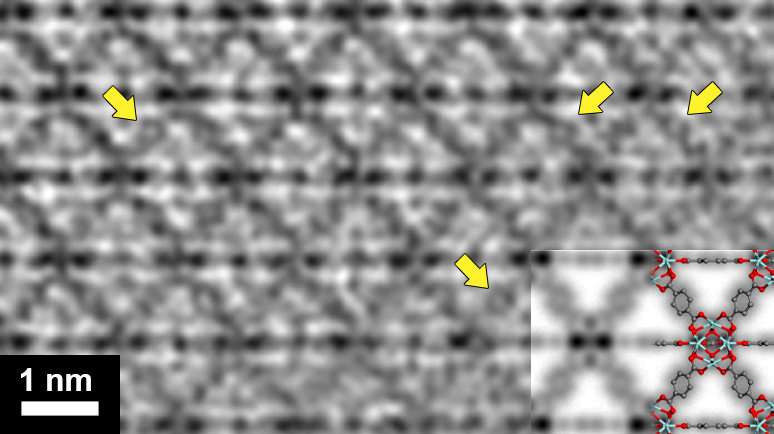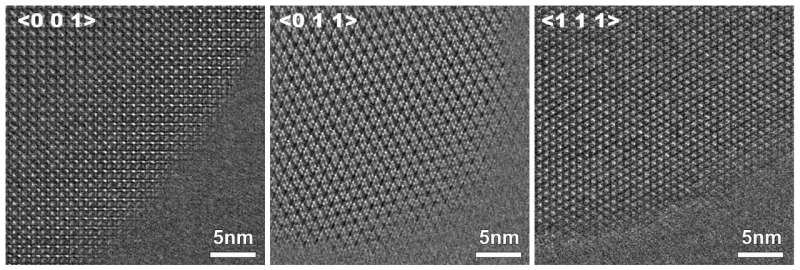Atomically resolving images of beam-sensitive materials using transmission electron microscopy

Staff members at King Abdullah University of Science and Technology (KAUST) have devised a methodology for the procurement of atomically resolved images of beam-sensitive materials using transmission electron microscopy. They published their findings as a first release in Science on January 18, 2018.
"High-resolution imaging of electron beam-sensitive materials is one of the most difficult applications of transmission electron microscopy (TEM). The salient challenges are the acquisition of images using extremely low electron doses, the time-constraint inherent in the search for crystal zone axis prior to the sample being damaged, precise image alignment and the accurate determination of the defocus value," Professor Yu Han explained.
The methodology devised at KAUST to fulfill these requirements has been proven by the acquisition of atomic-resolution TEM images of several metal organic frameworks (MOFs) and other similar beam sensitive materials, "reducing this procedure to a near-routine process," Kun Li said.
Although high-resolution TEM (HRTEM) is a powerful tool for structure characterization, it is not easily applied to electron-beam sensitive materials such as MOFs, which require ultra-low electron doses to remain intact. The recent introduction of the direct electron detection cameras has provided scientists with the capability of realizing an image in ultra-low dose mode (only a few electrons per square angstrom), but the potential of such a camera in the HRTEM imaging of electron beam-sensitive materials is still limited by the inhibiting obstacles: sourcing a zone axis, aligning images and determining an accurate defocus value.

"Our team at KAUST first developed an algorithm enabling us to achieve a one-step alignment of the zone axis while keeping the specimen intact. Unfortunately, due to inherent issues when dealing with beam-sensitive materials, HRTEM would still produce blurred images mainly due to sample drift during exposure," Han said. "To overcome this, a series of successive short exposures were taken. These, however, resulted in very noisy frames. An amplitude filter technique was developed to minimize noise and accurately align all the frames."
Also, to reconstruct the structure, the team designed a process making use of the instability of beam-sensitive materials to determine the absolute defocus value from the purposely amorphized region.
These processes, which were developed at KAUST and incorporate two provisional patents, are not just limited to beam-sensitive materials. The method for zone axis alignment is also particularly pertinent for the aligning of nanosized crystals, and that for image alignment is generally applicable to noisy images with periodic features.
"This seminal paper has not only significantly broadened the applications of HRTEM, but it has also provided the beam-sensitive materials researchers with a powerful tool capable of investigating the structure of beam-sensitive materials in much more localized detail than traditional X-ray diffraction techniques permit," Li explained. "This will undoubtedly facilitate beam-sensitive materials researchers in the designing of new structures with enhanced performance."
Journal information: Science



















